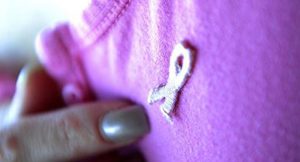
This woman’s guide to breast cancer will empower them to take self care and spread this knowledge to others. Breast cancer starts when cells in the breast begin to grow out of control. These cells usually form a tumour that can often be seen on an x-ray or felt as a lump. The tumour is malignant (cancer) if the cells can grow into (invade) surrounding tissues or spread (metastasize) to distant areas of the body. As the patient gets older the chances of getting breast cancer increases.
“Breast cancer lump develops silently in the body without producing any pain. Since it doesn’t pain, patients tend to neglect it. But those silent painless lumps are worrisome. Many patients develop lumps on both the breasts which are painful. And when they are in the age group of below or around 40 (or till they get menopause), those lumps are due to hormonal imbalances and they are called as or till they get menopause which are non-cancerous,” said Dr Reshma J Palep, consultant general and breast cancer surgeon, Mumbai.
She added, “Women should go for regular check-ups after the age of 40. As women get older, any painless new lump which develops needs an immediate medical attention. Also, breast self-examination should be done every month.”
According to Dr Palep, treatment depends on the stage of the cancer. “In the early stage most of the patients will require a surgery. The surgery can be a breast conservative surgery, where only the lump and the lymph nodes are removed and the entire breast need not to be removed. In the olden days, mastectomy used to be standard of care for every person detected with breast cancer. Today, due to advanced technology, there is no need to remove breast. As taking of a breast is taking off a part of a woman’s body. In a later stage, patients will need chemotherapy. Still the breast can be preserved. After which, they have to take radiation.” informed Dr Palep.
Here, Dr Palep tells how to be breast aware:
Symptoms of breast cancer :
- lumps
- a pain in the armpits or breast that does not change with the monthly cycle
- pitting or redness of the skin of the breast, like the skin of an orange
- a rash around or on one of the nipples
- a discharge from a nipple, possibly containing blood
- a sunken or inverted nipple
- a change in the size or shape of the breast
- peeling, flaking, or scaling of the skin on the breast or nipple
Causes of breast cancer :
- A woman who is not married, doesn’t have children or hasn’t breastfed are at a higher risk.
- A history of breast cancer or breast lumps: Women who have had breast cancer before are more likely to have it again, compared with those who have no history of the disease.
- Body weight: Women who are overweight or have obesity after menopause may have a higher risk of developing breast cancer, possibly due to higher levels of estrogen.
- Alcohol consumption and smoking: A higher rate of regular alcohol consumption and smoking appears to play a role.
A good breast health plan includes :
- Monthly Self-Breast Examination
- Clinical Breast Examination
- Annual Mammography
Self-breast examination steps :
1: After a bath , step in front of a large mirror and put your hands on your hips. Look at the size, shape, and color of your breasts. They should look as they normally do with no visible dimples,puckering,or swelling.
2: Raise your arms above your head and clasp your hands together. Examine your breasts as you did in step one and look for dimples, puckering, swelling, rashes, or inverted nipples.
3: Place your arms at your side and gently squeeze each nipple between finger and thumb to check for any discharge.
4: Next, lie down, and use your right hand to feel your left breast and then your left hand to feel your right breast. Taking three fingers, firmly press the breast in small circles from top to bottom and side to side. Make sure to go as far as the collarbone to the top of the abdomen and from cleavage to armpit. Do this three times, first with a soft touch, then with increased pressure, and on the very last time press firmly and deeply.
5: Finally, either sitting in a chair or standing, feel your breasts as you did in step four.
Suggested Article :- Yoga: Breast cancer survivors mantra for life


